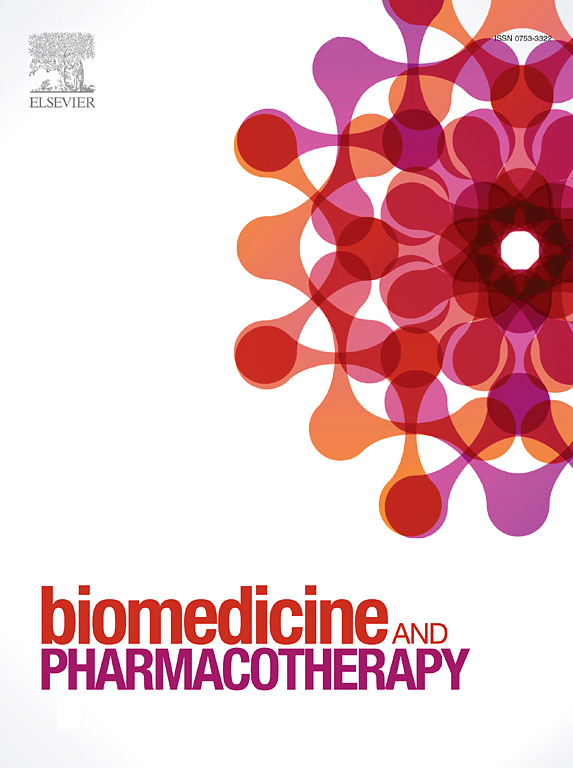Identification of nitrile-containing isoquinoline-related natural product derivatives as coronavirus entry inhibitors in silico and in vitro
IF 6.9
2区 医学
Q1 MEDICINE, RESEARCH & EXPERIMENTAL
引用次数: 0
Abstract
Severe acute respiratory syndrome coronavirus 2 (SARS-CoV-2) has caused millions of infections and deaths worldwide since its emergence in Wuhan, China, in late 2019. Natural product inhibitors targeting the interaction between the receptor-binding domain (RBD) of the SARS-CoV-2 spike protein and human angiotensin-converting enzyme 2 (ACE2), crucial for viral attachment and cellular entry, are of significant interest as potential antiviral agents. In this study a library of nitrile- and sulfur-containing natural product derived compounds were used for virtual drug screening against the RBD of the SARS-CoV-2 spike protein. The top 18 compounds from docking were tested for their efficacy to inhibit virus entry. In vitro experiments revealed that compounds 9, 14, and 15 inhibited SARS-CoV-2 pseudovirus and live virus entry in HEK-ACE2 and Vero E6 host cells at low micromolar IC50 values. Cell viability assays showed these compounds exerted low cytotoxicity towards MRC5, Vero E6, and HEK-ACE2 cell lines. Microscale thermophoresis revealed all three compounds strongly bound to the RBDs of SARS-CoV-2, SARS-CoV-2 XBB, SARS-CoV-1, MERS-CoV, and HCoV-HKU1, with their Kd values increasing as RBD sequence similarity decreased. Molecular docking studies indicated compounds 9, 14, and 15 bound to the SARS-CoV-2 spike protein RBD and interacted with hotspot amino acid residues required for the RBD-ACE2 interaction and cellular infection. These three nitrile-containing candidates, particularly compound 15, should be considered for further development as potential pan-coronavirus entry inhibitors.
在硅学和体外鉴定作为冠状病毒进入抑制剂的含腈异喹啉相关天然产物衍生物。
严重急性呼吸系统综合征冠状病毒 2(SARS-CoV-2)自 2019 年底在中国武汉出现以来,已在全球造成数百万人感染和死亡。SARS-CoV-2尖峰蛋白的受体结合域(RBD)与人类血管紧张素转换酶 2(ACE2)之间的相互作用对病毒的附着和细胞进入至关重要,针对这种相互作用的天然产物抑制剂作为潜在的抗病毒药物引起了人们的极大兴趣。本研究利用含腈和含硫天然产物衍生化合物库针对 SARS-CoV-2 穗状病毒蛋白的 RBD 进行了虚拟药物筛选。研究人员对对接筛选出的前 18 种化合物进行了抑制病毒进入的有效性测试。体外实验显示,化合物 9、14 和 15 能以较低的微摩尔 IC50 值抑制 SARS-CoV-2 伪病毒和活病毒进入 HEK-ACE2 和 Vero E6 宿主细胞。细胞活力测定显示,这些化合物对 MRC5、Vero E6 和 HEK-ACE2 细胞系的细胞毒性较低。微尺度热电泳显示,所有这三种化合物都与 SARS-CoV-2、SARS-CoV-2 XBB、SARS-CoV-1、MERS-CoV 和 HCoV-HKU1 的 RBD 强烈结合,其 Kd 值随着 RBD 序列相似性的降低而增加。分子对接研究表明,化合物 9、14 和 15 与 SARS-CoV-2 穗状病毒蛋白 RBD 结合,并与 RBD-ACE2 相互作用和细胞感染所需的热点氨基酸残基相互作用。这三种含腈候选化合物,尤其是化合物 15,应考虑进一步开发为潜在的泛冠状病毒进入抑制剂。
本文章由计算机程序翻译,如有差异,请以英文原文为准。
求助全文
约1分钟内获得全文
求助全文
来源期刊
CiteScore
11.90
自引率
2.70%
发文量
1621
审稿时长
48 days
期刊介绍:
Biomedicine & Pharmacotherapy stands as a multidisciplinary journal, presenting a spectrum of original research reports, reviews, and communications in the realms of clinical and basic medicine, as well as pharmacology. The journal spans various fields, including Cancer, Nutriceutics, Neurodegenerative, Cardiac, and Infectious Diseases.

 求助内容:
求助内容: 应助结果提醒方式:
应助结果提醒方式:


